34 F. high yesterday in the Twin Cities (shortly after midnight). Temperatures fell thru the 20s by afternoon.
29 F. average high for February 14.
34 F. high on February 14, 2012.
1.1" snow fell yesterday at KMSP. Total of
1.6" from the most recent clipper.
No significant snow looking out 7-10 days.
Close Call
To paraphrase comedian George Carlin "between
asteroid near-misses and giant solar flares - don't sweat the snow
flurries!" Today 2012 DA14, a 150 foot wide chunk of rock, passes 17,500
miles above the Earth. In astronomical terms that's a very close call.
My friends in emergency management remind me
that the solar cycle peaks in 2013. Apparently there's a 1 in 9 chance
of a once-in-a-century solar super-storm capable of bringing down
portions of the grid. Imagine a world without reality TV, e-mail spam or
Facebook?
Some days the 19th century sounds pretty good.
We live with relative risk every day. And for
the record the odds of succumbing to stroke, cancer, heart disease or
firearms are astronomically higher than asteroid strikes, or even
natural disasters. Details on the blog below.
The latter half of February looks colder than
average, a swipe of (fresh!) Canadian air today & Saturday, again
the middle of next week. It won't be as Nanook as January; a higher sun
angle already having an impact. A big eastern storm may brush us with
light snow late next week; perhaps a few inches.
Glass half full: having cold air in place increases the potential for big storms into March.
From The National Safety Council - source
here.
| Cause of Death |
Lifetime Odds |
| Heart Disease |
1-in-5 |
| Cancer |
1-in-7 |
| Stroke |
1-in-23 |
| Accidental Injury |
1-in-36 |
| Motor Vehicle Accident* |
1-in-100 |
| Intentional Self-harm (suicide) |
1-in-121 |
| Falling Down |
1-in-246 |
| Assault by Firearm |
1-in-325 |
| Fire or Smoke |
1-in-1,116 |
| Natural Forces (heat, cold, storms, quakes, etc.) |
1-in-3,357 |
| Electrocution* |
1-in-5,000 |
| Drowning |
1-in-8,942 |
| Air Travel Accident* |
1-in-20,000 |
| Flood* (included also in Natural Forces above) |
1-in-30,000 |
| Legal Execution |
1-in-58,618 |
| Tornado* (included also in Natural Forces above) |
1-in-60,000 |
| Lightning Strike (included also in Natural Forces above) |
1-in-83,930 |
| Snake, Bee or other Venomous Bite or Sting* |
1-in-100,000 |
| Earthquake (included also in Natural Forces above) |
1-in-131,890 |
| Dog Attack |
1-in-147,717 |
| Asteroid Impact* |
1-in-200,000** |
| Tsunami* |
1-in-500,000 |
| Fireworks Discharge |
1-in-615,488 |
Earth To Narrowly Avoid Collision With 150-Foot Wide Asteroid Today.
Hey, have that extra large decaf latte! And you may want to hold your
breath and click your heels a few times - for luck - around 1:24 pm.
Here's an excerpt of a story at
The Washington Post: "
Early
(this) afternoon (2:24 p.m. EST), planet Earth will be buzzed by an
asteroid some 150 feet wide, identified as 2012 DA14, as it intersects
Earth’s orbit just 17,500 miles above our heads. According to NASA,
this is the closest documented encounter of an asteroid this large
(excluding ones which actually smashed into the Earth). While this
might not seem at first even a close miss, on the cosmic scale of the
solar system, it certainly qualifies as a very close call..."
Image credit
here.
Asteroids And Solar Flares: What Are The Risks? We
really don't have to worry about today's near-miss with the asteroid,
but there is a fair amount of paranoia about the solar cycle and the
risk of an (historic) solar flare. Here's a
2:30 YouTube explainer, courtesy of WeatherNation TV: "
Meteorologist
Paul Douglas looks at the upcoming close encounter of Asteroid 2012
DA14 plus the potential for a once in a century solar flare. Where do
these events fall on the worry scale?"
"Cold Enough".
Although it won't be nearly as cold as it was in late January,
temperatures will be 10-20 degrees below average today, again Tuesday
and Wednesday of next week. We should see 1-2 days at or above freezing
Sunday and Monday of next week, the best chance of a subzero morning
next Wednesday morning. Graph: Iowa State.
Storm-Free. The next couple of days will be chilly
enough, but at least the sun should be shining part of the time. The
middle of next week may be a couple degrees colder, before slight
moderation later in the week. ECMWF model guidance above.
Another Near Miss? ECMWF model guidance is trending
next week's storm too far south/east of Minnesota for significant snow; a
better chance of a plowable accumulation from Iowa into Wisconsin - the
atmosphere warm enough for rain over much of the Ohio Valley and East
Coast. Map above valid next Friday morning courtesy of WSI.
NHC: Hurricane Sandy Caused $50 Billion In Damage, Killed 147. Here's an excerpt of good summary of a recent NOAA report on Sandy from
The Sun-Sentinel: "
Hurricane Sandy
caused almost $50 billion in damage when it struck the East Coast in
October, making it the second costliest storm behind Hurricane Katrina
to hit the United States since 1900. That’s according to the final Sandy report, released by the National Hurricane Center on Tuesday. The report also noted that Sandy killed a total of 147 people, with 72 of those in the Mid-Atlantic and Northeast U.S. Sandy was a “a classic late-season hurricane
in the southwestern Caribbean Sea,” the report said. Before striking
the U.S. coastline, it hit Jamaica as a Category 1 hurricane, Cuba as a
Category 3 and the Bahamas as a Category 1..." (Sandy photo courtesy of FEMA).
* Sandy was America's second costliest storm, second only to Katrina in 2005. Details from
Huffington Post.
Hurricane's Downgrade Undercut Warnings, Report Finds.
Sandy was a (freak) mash-up of fading hurricane and major Nor'easter.
Technically it wasn't a hurricane as it approached the New Jersey
shoreline, and not using the hurricane terminology ("Hurricane
Warnings", etc) may have given the impression that Sandy wasn't a
dangerous storms. Of course nothing could be further from the truth.
Here's an excerpt from a
New York Times story: "...
Issuing
a hurricane warning and then downgrading the storm to a post-tropical
cyclone could have devastating consequences, emergency management
officials across the region warned agency officials, with people
deciding that the storm did not pose a serious threat. “We could have
continued to call it a hurricane for one or two days,” said James
Franklin, the chief of hurricane forecasts for the center. But that
would have been a lie, he said, and “would have utterly destroyed the
credibility of the agency in the long run....”
January 2013 Recap. Nationwide it was the 39th warmest January on record, according to NOAA data. For a complete overview of last month
click here.
Royal Academy Of Engineering Says UK Better Prepared For Solar Superstorm.
The solar cycle peaks in the coming months, and there's a fair amount
of angst about the risk of a "super-flare", something that could bring
down the grid. Alarmist hype? I certainly hope so. Here's a snippet of
an interesting story at
Gizmag.com: "
Britain
is better prepared for a solar superstorm than many countries,
including the United States. The Royal Academy of Engineering has
released a multi-disciplinary report on space weather’s impact on
Britain, as part of the UK National Risk Assessment. The declassified
portion of the assessment shows the level of UK preparedness in the face
of severe solar storms, and outlines the dangers Earth faces from
superstorms and how to avoid or mitigate damage..."
Image credit above: "
Artist's impression of the interaction of the Sun and the Earth's magnetosphere." (Image: NASA)
Can Emprimus Save Civilization? During every 13 year
solar cycle there is a 1 in 9 risk of a once-in-a-century solar storm,
potentially big enough to bring down portions of the electrical grid.
As if we don't all have enough to worry about. Here's an excerpt of a
fascinating story from
Twin Cities Business: "
When
George Anderson looks up, he sees national vulnerability. It isn’t
asteroids that worry Anderson, and he’s unconcerned about global
warming. Instead, he thinks a cloud of magnetically charged gas is
going to float down from the sky and scramble our electronics. Data
centers from coast to coast will be erased in a flash. Airplanes will
fall from the sky. Blackouts will plunge the country into prolonged food
and water shortages, eventually leading to lawlessness and chaos. It
sounds like the setup for a screenplay by Lost creator J. J. Abrams,
but Anderson insists it isn’t science fiction. He’s stockpiling food
for his family. He’s also been pouring his personal fortune into a new
company called Emprimus that is starting to be noticed, and that he
hopes can help save civilization. While he’s not the only one who’s
alarmed about the risk, he faces stiff headwinds from a slow-to-change
power generating industry. Can a business founded on an iffy doomsday
scenario primed to occur as early as next year gain traction in time
to make a difference?..."
Image credit above: Photography by Travis Anderson. "
Engineer and Emprimus founder George Anderson".
More Signs Point To An Apple iWatch. Dick Tracy, here we come.
Gizmag.com has the story (and speculation); here's an excerpt: "
What will Apple’s next big product be? Two months ago, if you’d polled a room full of analysts, most would have likely answered a TV set.
Recently, though, a picture has been forming of a smaller and more
portable innovation: the smartwatch. Three major media outlets have now
separately reported that Apple is indeed working on an iWatch. Following previous reports from the New York Times and Wall Street Journal, Bloomberg
now adds that Apple has a team of 100 product designers working on
the smartwatch. The group – which includes hardware, software, and
marketing specialists – has reportedly grown within the last year..."
Good Cyber-Advice. Below find tips from the United States Computer Emergency Readiness Team (
US-CERT) on how to protect your personal information online:
· Be careful supplying personal information
- Unless you trust a site, don't give your address, passwords, or
financial information. Look for indications that the site uses SSL to
encrypt your information (such as the ‘s’ in ‘https’).
· Limit cookies
- To make sure that other sites are not collecting personal
information about you without your knowledge, choose to only allow
cookies for the web site you are visiting and block or limit cookies
from a third-party. If you are using a public computer, you should make
sure that cookies are disabled.
· Do not use your primary email address in online submissions
- Submitting your email address could result in spam. If you do not
want your primary email account flooded with unwanted messages, consider
opening an additional email account for use online.
· Avoid using debit cards for online purchases
- Credit cards usually offer some protection against identity theft
and may limit the monetary amount you will be responsible for paying.
· Devote one credit card to online purchases
- Consider opening a credit card account for use only online. Keep a
minimum credit line on the account to limit the amount of charges an
attacker can accumulate.
TV Zombie Attack Warning A False Alarm. Really? And
here I've been hiding in my safe room for the last 48 hours. This is
funny, in a tragic sort of way. Here's an excerpt from
The LaCrosse Tribune: "
A
goof-up by some La Crosse disc jockeys caused WKBT-TV viewers to hear a
warning of a zombie attack. The message went out shortly after 7:30
a.m. Tuesday when the hosts of the Z-93 morning show were joking about
how hackers broke into the Emergency Alert System of a Montana TV
station Monday and sent out the bogus warning. The problem: Z-93 is the
primary station in the local emergency network, and when they played a
tape of the hoax, the alert tones triggered WKBT’s receiver, which
automatically rebroadcast the signal..."
An Enlightening Valentines Day. Talk about creative -
this is for a true weather enthusiast (storm chaser?) on Valentine's
Day - thanks to Mike Hall for sharing this one.
Clipped Again. Thanks to Diane Baum from Inver Grove
Heights for sending in this photo of a snowy parking lot after the
1-1.5" of fluff that fell Wednesday night.
Snowy Wonderland. It did look pretty amazing out
there Thursday morning - not great on the highways, but snow was
plastered on trees, shrubs, slow-moving dogs. A Winter Wonderland. St.
Cloud picked up 3.6" from the clipper; highs ranged from 19 at
International Falls to 32 at Rochester.
Paul's Conservation Minnesota Outlook for the Twin Cities and all of Minnesota:
TODAY: More clouds than sun. Brisk. Winds: NW 10-15. High: 16
FRIDAY NIGHT: Partly cloudy - cold enough. Low: 1
SATURDAY: More sun. Call your travel agent. Less wind. High: 15
SUNDAY: Breezy. Trending milder again with fading sunshine. Wake-up: 12. High: near 30
MONDAY: Few flurries, then turning cooler. Wake-up: 19. High: 30, falling during the afternoon.
TUESDAY: Mix of clouds and sun, harsh breeze. Wake-up: 7. High: 13
WEDNESDAY: Fading sun, still a little numb. Wake-up: 1. High: 15
THURSDAY: Clouds thicken. Light snow at night. Wake-up: 11. High: 25
* photo above from Lewiston, Kentucky courtesy of Mike Hall Photography and WeatherNation TV.
Climate Stories...
Bill McKibben Is Coming To Minnesota Next Week.
Environmentalist, author and climate change activist Bill McKibben is
coming to Minnesota next week, to ski the "Birkie", and to talk about
his research and findings, and what they mean for Minnesota. "
Getting Bill McKibben (author and founder of 350.org) to come and ski the Birkie has been a ten year project for me",
said Paul Thompson, co-founder of Cool Planet, the host of McKibben's
5-day visit to Minnesota and Wisconsin February 20-24. "
It is a
huge honor for the global leader of the climate solutions movement to
take this kind of time to do what he loves, cross country ski, and to
share his love of winter with all of us."
Here's what Bill is saying about the Birkebeiner Ski Marathon and his efforts to preserve winter for future generations:
"
The Birkie is one of the temporary and unofficial - but
completely wonderful - capitals of North American Winter. So it's the
perfect place to talk about what we have to do to keep this season
skiable forever!"
In McKibben's presentations at the University of St. Thomas (2/20, 7
pm) and Macalaster College (2/21, noon) he'll talk about the current
state of climate science, and the necessary scale and pace of our
efforts to do something about global warming. In particular, Bill will
discuss the leading role colleges can play now as fossil fuel
divestment has become the hottest student movement in several decades.
We hope to see you there. Details at
coolplanetmn.com.
Arctic Death Spiral Bombshell: Cryo-Sat2 Confirms Sea Ice Volume Has Collapsed.
This is the most troubling news I've heard in a long time, confirmation
that not only aerial extent, but (more even more importantly) arctic
sea ice volume has diminished - dramatically. Here's an excerpt from
Think Progress: "
The
sharp drop in Arctic sea ice area has been matched by a harder-to-see,
but equally sharp, drop in sea ice thickness. The combined result has
been a collapse in total sea ice volume — to one fifth of its level in
1980. Back in September, Climate Progress reported
that the European Space Agency’s CryoSat-2 probe appeared to support
the key conclusion of the Pan-Arctic Ice Ocean Modeling and Assimilation
System (PIOMAS) at the University of Washington’s Polar Science Center:
Arctic sea ice volume has been collapsing much faster than sea ice
area (or extent) because the ice has been getting thinner and thinner..."
Secret Funding Helped Build Vast Network Of Climate Denial Thinktanks.
The Guardian is doing some terrific reporting; here's another story
that caught my eye, proving that the amount of money in play is
staggering. Fossil fuel interests are doing anything and everything to
perpetuate confusion ("The science isn't settled! There is no
consensus!") - hoping to delay any real action on reducing greenhouse
gas emissions. Here's an excerpt: "
Conservative billionaires used a
secretive funding route to channel nearly $120m (£77m) to more than 100
groups casting doubt about the science behind climate change,
the Guardian has learned. The funds, doled out between 2002 and 2010,
helped build a vast network of thinktanks and activist groups working
to a single purpose: to redefine climate change from neutral scientific
fact to a highly polarising "wedge issue" for hardcore conservatives.
The millions were routed through two trusts, Donors Trust and the Donors Capital Fund,
operating out of a generic town house in the northern Virginia suburbs
of Washington DC. Donors Capital caters to those making donations of
$1m or more..."
Five Myths About Keystone XL, Debunked.
Media Matters has the story - here's the intro: "
As
the State Department nears a decision on whether or not to approve the
Keystone XL pipeline, the media is exaggerating its economic benefits
and downplaying environmental risks to advocate for the project. Here,
Media Matters takes on five of the prevailing media myths about Keystone
XL;"
- Would Keystone XL contribute to climate change?
- Does the new pipeline route resolve local environmental concerns?
- How would the pipeline impact U.S. energy security?
- How many jobs would building the pipeline create?
- Would Keystone XL affect gasoline prices?
Climate Change: Congress Warned About "High Risk" Posed By Global Shifts. Think anyone in Congress will listen - or care? Here's an excerpt from
Huffington Post: "
The federal government's official watchdog had a message for Congress on Thursday: Hey, Stupid, the climate is changing.
The Government Accountability Office delivered that warning in its
update of the greatest threats the government faces in carrying out
federal programs. Generally the GAO identifies things like flaws in the
defense contracting process and fraud in health care programs. This
year's update of the High-Risk Series
report included the increasingly obvious and growing external threat
of climate change -- in spite of the continued insistence from many
members of Congress that fears over global warming are overblown..."
* The GAO (General Accounting Office) report is
here. An excerpt:
- Limiting the Federal Government's Fiscal Exposure by Better Managing Climate Change Risks.
Climate change creates significant financial risks for the federal
government, which owns extensive infrastructure, such as defense
installations; insures property through the National Flood Insurance
Program; and provides emergency aid in response to natural disasters.
The federal government is not well positioned to address the fiscal
exposure presented by climate change, and needs a government wide
strategic approach with strong leadership to manage related risks.
- Mitigating Gaps in Weather Satellite Data. Potential
gaps in environmental satellite data beginning as early as 2014 and
lasting as long as 53 months have led to concerns that future weather
forecasts and warnings--including warnings of extreme events such as
hurricanes, storm surges, and floods--will be less accurate and timely.
A number of decisions are needed to ensure contingency and continuity
plans can be implemented effectively.
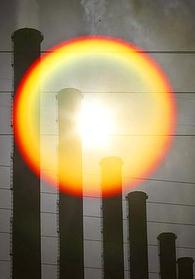 Two-Thirds Of Americans Want Obama To Act On Climate Change, Says Poll
Two-Thirds Of Americans Want Obama To Act On Climate Change, Says Poll. Here's an excerpt from the U.K.
Guardian: "
Two-thirds of Americans want President Barack Obama to act now on climate change,
adding momentum to his state of the union promise to take up the
challenge with or without Congress. Two new polls commissioned by
environmental groups and released on Wednesday showed clear majorities
of Americans supporting Obama taking significant action on climate
change. A poll for the League of Conservation Voters showed that 65% of
Americans want Obama to take "significant steps" to prevent climate
change. Pollster Joel Benenson said public support – which cut across
race and age – gave Obama extra leverage on his central promise to make
climate change a central component of his second-term agenda. "This is
across a broad spectrum of Americans," Benenson told a conference call..."
Satellite Confirms Controversial Analysis Of Arctic Sea-Ice Volume; Major Ice Loss Revealed.
The Science Recorder has the story - here's a clip: "
New observations from a European Space Agency satellite
confirm a University of Washington analysis of Arctic sea-ice volume.
The findings reveal that the Arctic has lost more than a third of
summer sea-ice volume since a decade ago, when a U.S. satellite
gathered similar data. Merging the UW analysis and the new ESA
satellite observations reveals the summer minimum in Arctic sea ice is
one-fifth of what it was in 1980. According
to the UW’s Polar Science Center, sea ice volume is a key climate
indicator. However, Arctic sea ice volume cannot currently be observed
continuously. Observations from a variety of sources, including
satellites and submarines, are all limited in space and time. The UW
model enables scientists to estimate sea ice volume changes on a
continuous basis by combining observations from a variety of sources..."
Bob Inglis: The Republican Who Believes In Climate Change. He's not the only Republican, but it's a small, lonely club. Trust me.
The Guardian has the story - here's an excerpt: "
Heresy
may have cost Bob Inglis his seat in the U.S. Congress. As a six-term
Republican congressman from one of South Carolina's most conservative
districts, Inglis told an audience at a 2010 campaign event that he
believed in human-caused climate change. The fallout from that comment
helped ensure his defeat by a Tea Party-backed candidate. After leaving
Congress, Inglis established the Energy and Enterprise Initiative at
George Mason University. The organization has taken on a daunting
mission – to convince American conservatives that climate change is
real and that free enterprise principles hold the keys for dealing with
it. Inglis favors removing all fuel subsidies – from solar and wind to
fossil fuels – and imposing a carbon tax as the fairest way to make
polluters pay for the greenhouse gas emissions they cause..."
"...
A recent review of every peer-reviewed scientific study
published on climate change science in the last two decades (13,950) by
James Powell, the former president of three prestigious American
universities, found just 24 of them questioned whether climate change
was real, and was caused by greenhouse gas emissions..." - from a
U.S. News and World Report Op-Ed below.
Obama Needs To Lay Out A Plan On Climate Crisis. Here's a video and portion of an Op-Ed from
CNN.com: "...
As if the warnings from scientists weren't enough, in 2012 -- the hottest year on record in the contiguous U.S.
-- we saw the true face of climate change: freak storms, raging
wildfires, a new Dust Bowl in the heartland and devastating damages.
Most heartbreakingly, innocent lives were lost. Here's what Obama can do
to help stop climate change -- and what he should announce in his
speech on Tuesday night.
1. Negotiate a bilateral agreement with China
New Secretary of
State John Kerry declared climate change a "life-threatening issue" at
his confirmation hearing. Obama should make his chief diplomat's top
priority the crafting of a bilateral agreement with China to reduce
carbon pollution and accelerate clean energy..."
Obama Cites Storms, Drought, To Build Case For Climate Action. Here's a snippet from a story at
The National Journal: “..
.If
Congress won’t act soon to protect future generations, I will,” he
said. That means he’s preparing to work with the heads of all his
Cabinet agencies on a suite of executive-level climate change actions
that he can enact on his own. Chief among them: Environmental
Protection Agency regulations that would force existing coal-fired
power plants to cut their carbon pollution, and a slate of actions
across agencies aimed at preparing U.S. cities and towns to adapt to
the impacts of climate change, including increased flooding, drought,
and more extreme storms. He also plans to create an Energy Security
Trust Fund, which will take revenue generated by oil and gas drilling
on public funds and channel it for clean energy research and
development (while the White House can use its authority to create the
fund, it will need Congress to act to allow it to use the fossil-fuel
revenue for clean-tech research)..."
Photo credit above: AP Photo/Charles Dharapak, Pool
On Climate Change Obama Delivered. The rhetoric was
powerful in his State of the Union address, but will the words be
backed up by deeds, by real action? With a hopelessly divided Congress
will anything (tangible) get done? Here's an excerpt of an Op Ed at
Politico: "...
We
just wrapped up the hottest year on record across the continental
United States, accompanied by the worst drought in half a century. Folks
are hurting in the heartland, where crops have withered and pastures
died. Businesses are suffering across the nation’s great middle, where
barges drag bottom in the Mississippi. And cities are reeling from
devastation and loss from hurricanes and so-called super storms. The
president has seen in this hardship the face of climate change and the
rising costs it brings. That toll, he rightly asserted in his State of
the Union address, will only continue to climb unless we decide, as a
nation, to take a stand..."
Photo credit above: "
The author says this isn't a time for hesitation and half-hearted measures". | John Shinkle at POLITICO
Why Tokyo Has More To Fear From Sea Level Rise Than Vancouver.
Not all coastal areas are (equally) threatened by rising sea levels,
the result of warming/expansion and melting of Greenland and Antarctic
ice. Here's an excerpt of a story at
The Washington Post: "...
Some
coastal areas have more to fear from climate change than others.
Tokyo and Sydney, for instance, are likely to see bigger sea-level
rises than Vancouver or London. That’s according to a new study that
attempts to model the oddities of the rising oceans. Climatologists
have known for many years that the seas are creeping up on us. As
humans warm the planet, the world’s ice caps and glaciers are melting
and the oceans are expanding. Various projections have sea levels on pace to rise
between 2 and 7 feet by 2100. What makes this so tricky to prepare
for, however, is that sea levels won’t rise evenly everywhere. There
are huge variations.
In some regions, like the Mississippi Delta, the land is sinking, due
to sediment erosion or oil drilling. In other places, strong wind and
ocean currents can warp the waters and affect local sea levels.
Meanwhile, the shrinking ice sheets in Greenland and Antarctica have
their own gravitational pull, creating further imbalances...."
* graphic above courtesy of
New Scientist,
which has an interactive graphic showing how sea level rise will vary
across the globe. Coastal New England is much more vulnerable than the
Pacific Northwest.





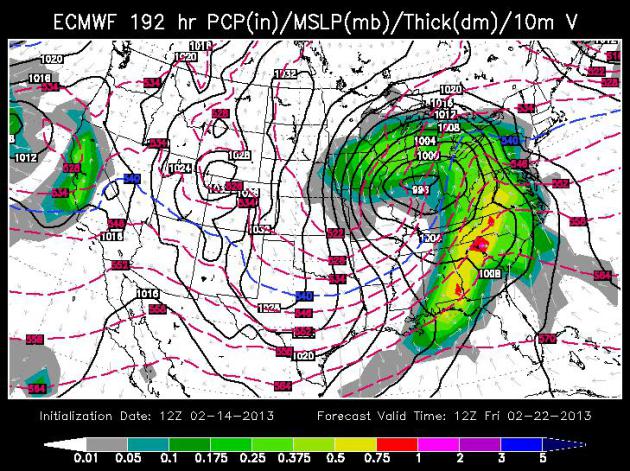
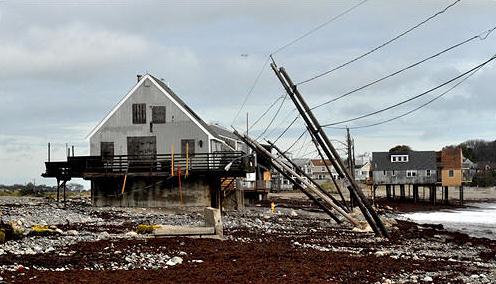

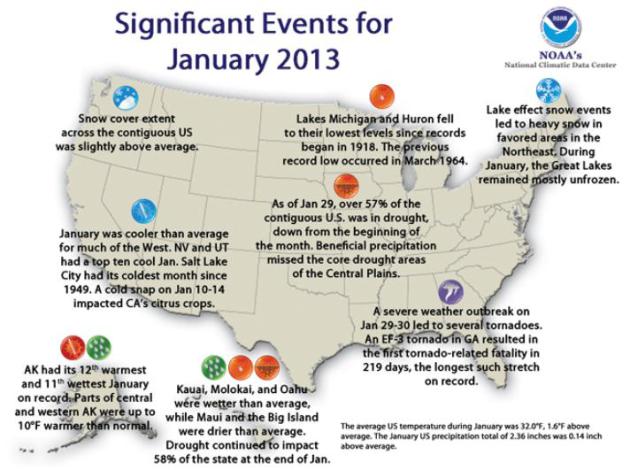
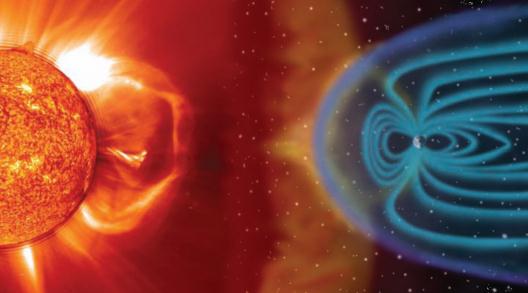



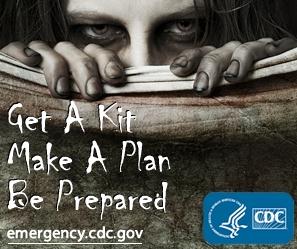

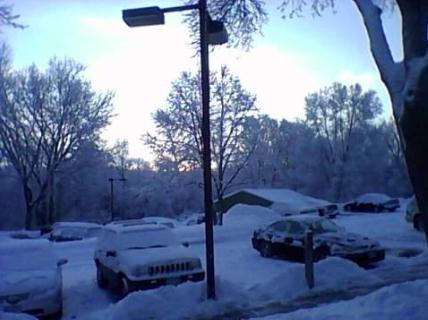


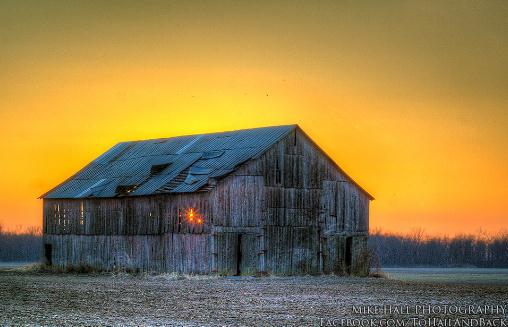


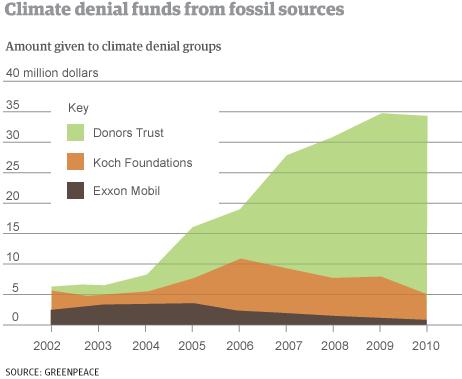
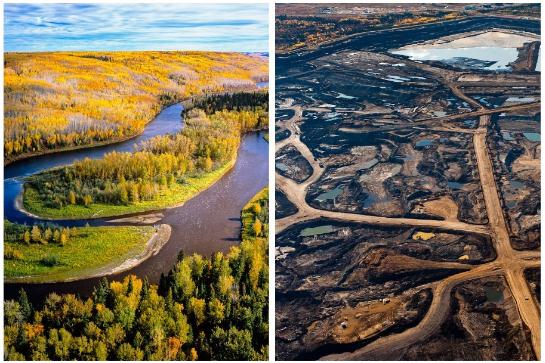
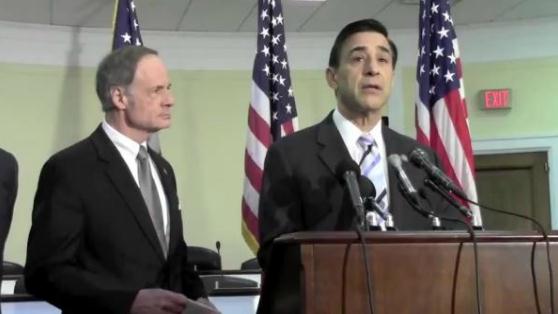

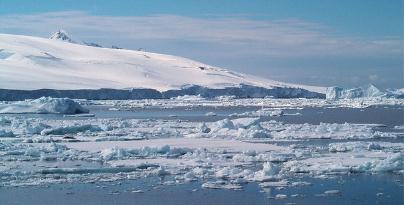
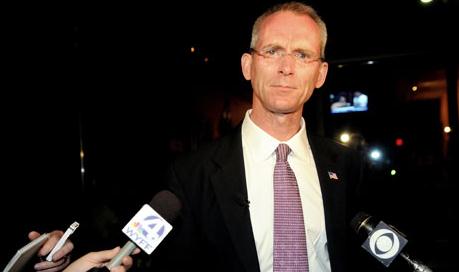
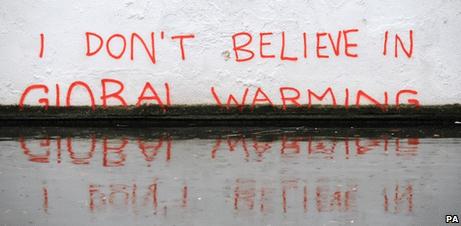
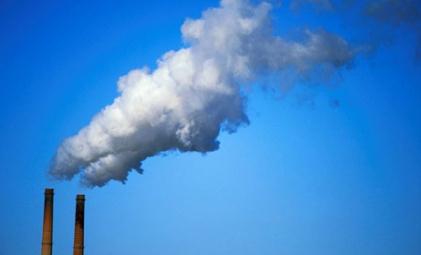


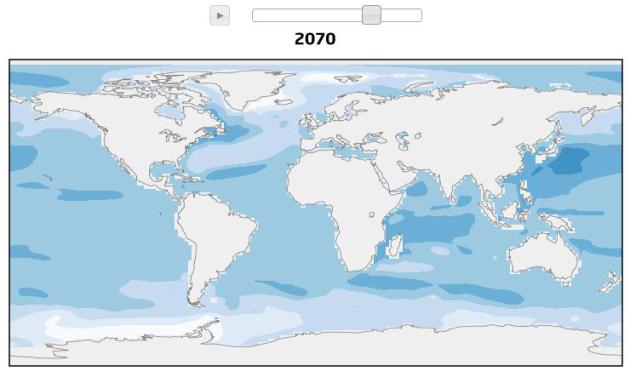
Paul, I am an avid fan of your's - since way back, when you were on KARE 11. I just wanted you to know that I appreciate all of the info. and links that you share on this blog. Keep up the good work and thank you! Susan Thompson,Pine Island, MN.
ReplyDelete